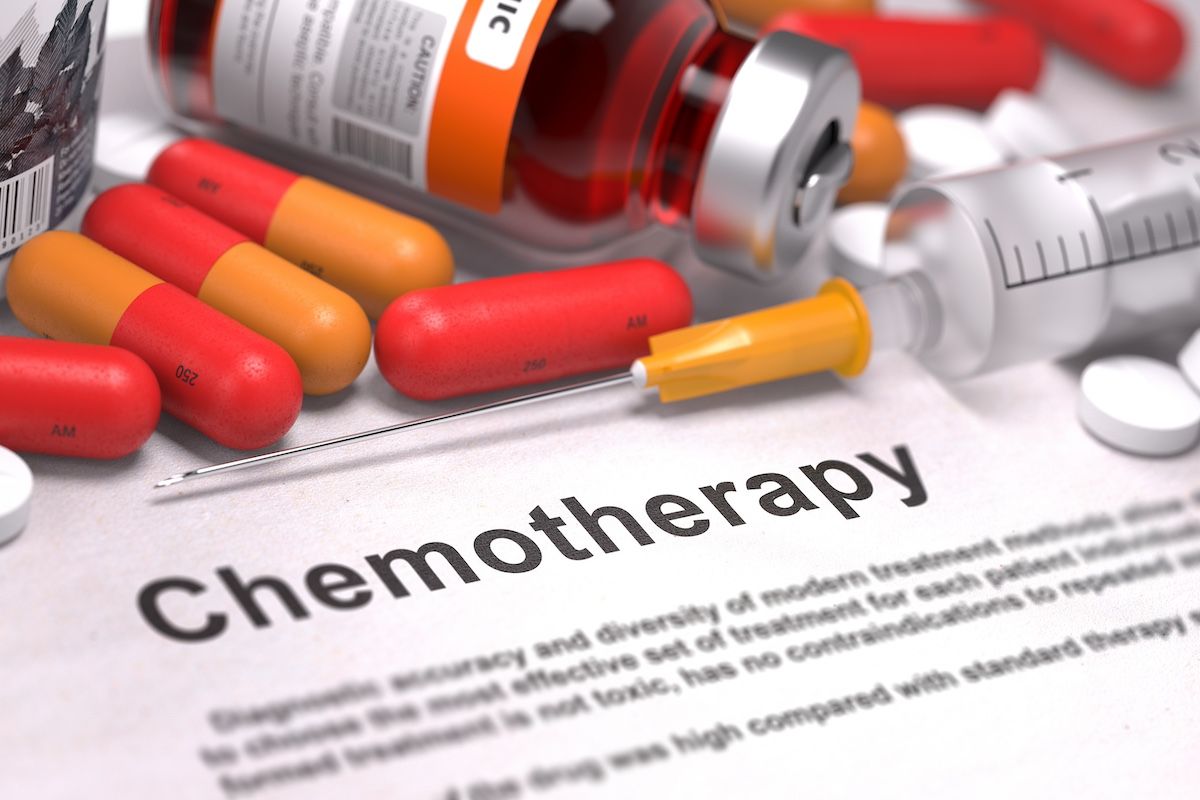- Center on Health Equity & Access
- Clinical
- Health Care Cost
- Health Care Delivery
- Insurance
- Policy
- Technology
- Value-Based Care
Inotuzumab Ozogamicin Plus Dose-Adjusted EPOCH: Promise in R/R B-ALL
Phase 1 trial results indicate that combining inotuzumab ozogamicin with dose-adjusted EPOCH chemotherapy could offer a safe, well-tolerated, and effective treatment option for patients with relapsed or refractory CD22+ B-cell acute lymphoblastic leukemia or lymphoma (R/R B-ALL).
A new therapeutic combination that includes the antibody-drug conjugate inotuzumab ozogamicin (InO; Besponsa; Wyeth Pharmaceuticals/Pfizer) has taken an important first step to eventually treat adult patients with relapsed or refractory CD22+ B-cell acute lymphoblastic leukemia or lymphoma (R/R B-ALL). Phase 1 dose-escalation trial results for fractionated doses of InO given along with a dose-adjusted EPOCH (etoposide phosphate, prednisone, vincristine sulfate [Oncovin], cyclophosphamide, and doxorubicin hydrochloride; DA-EPOCH) chemotherapy backbone suggest that this chemoimmunotherapy regimen is safe, well tolerated, and clinically active, the researchers report in JAMA Oncology.1
“Many patients were able to proceed to poststudy consolidative allogeneic hematopoietic cell transplant and/or chimeric antigen receptor T-cell (CAR T) therapy” after this regimen, they declared, so further clinical investigation is warranted.
Inotuzumab ozogamicin can be delivered in most clinical settings, unlike CAR T and blinatumomab, which are logistically complex | Image Credit: tashatuvango-stock.adobe.com

In the R/R B-ALL space, current treatment options are limited. Although InO has been associated with hepatotoxicity, including sinusoidal obstructive syndrome (SOS), significant severe hepatic toxic effects were rare in this trial, with just 1 case of SOS emerging.
At least 5% blood or marrow blasts or measurable extramedullary disease (EMD) was required for enrollment into this single-arm, nonrandomized trial. Twenty-four patients enrolled (median age, 46 years; median prior therapy lines, 3), of whom 15 (62%) were male patients.
Conducted between September 2019 and November 2022, the trial studied 3 dose levels of InO, and the highest—0.6 mg/m2on days 8 and 15 of each 28-day cycle—was shown to be the maximum tolerated dose (MTD), which was the study’s primary outcome. DA-EPOCH was given on days 1 to 5.
The MTD was defined as the highest dose level that produced a rate of dose-limiting toxicity (DLT) below 33%, the team explained. When 3 of 11 participants (27%) treated with 0.6 mg/m2 experienced DLT, that secured its MTD status.
A secondary outcome was response rates, and the overall response rate was 83%. Five of 6 participants with EMD experienced treatment response, the authors specified.
The morphologic complete response rate was 84%, 88% of which was measurable residual disease negative. Survival estimates were another secondary outcome, and median overall survival, duration of response, and event-free survival were 17.0, 15.0, and 9.6 months, respectively.
Finally, regarding the last secondary outcome—toxic effects—the authors reported that no deaths occurred during the study. Just 1 of the 24 patients developed SOS after poststudy allograft, and 2 experienced grade 3 abnormal liver test results.
Why this combination? CAR T and blinatumomab, a bispecific T-cell engager, are treatment options for patients with R/R B-ALL, but they have numerous drawbacks. These include “unique toxic effects, cost, and logistical complexity, which limit their availability to specialized centers,” the authors noted. “Conversely, InO can be delivered in most clinical settings and, unlike CAR T and blinatumomab, has retained activity in high-volume disease states.”
In previous attempts to combine InO with lower-intensity chemotherapy, improvements in survival were modest and hepatotoxicity remained concerning.
Well established in treating aggressive, mature B-cell neoplasms, DA-EPOCH is less toxic and more simple to administer than such regimens as hyper-CVAD (cyclophosphamide, vincristine, doxorubicin, and dexamethasone, alternating with methotrexate and cytarabine).2 The research team decided it was a worthy backbone candidate to which a novel agent like InO, especially in lower doses with a fractionated dose schedule, could be added.
The trial’s results, said the investigators, indicate that eventually, “this is a regimen that can be offered outside specialized centers, provided that staff are comfortable with toxic effects germane to patients with acute leukemia.”
References
1. Kopmar NE, Quach K, Gooley TA, et al. Dose-adjusted EPOCH plus inotuzumab ozogamicin in adults with relapsed or refractory B-cell ALL: a phase 1 dose-escalation trial. JAMA Oncol. Published online May 9, 2024. doi:10.1001/jamaoncol.2024.0967
2. Kantarjian H, Haddad FG, Jain N, et al. Results of salvage therapy with mini-hyper-CVD andinotuzumab ozogamicin with or without blinatumomab in pre-B acute lymphoblastic leukemia. J Hematol Oncol. 2023;16(1):44. doi:10.1186/s13045-023-01444-2
